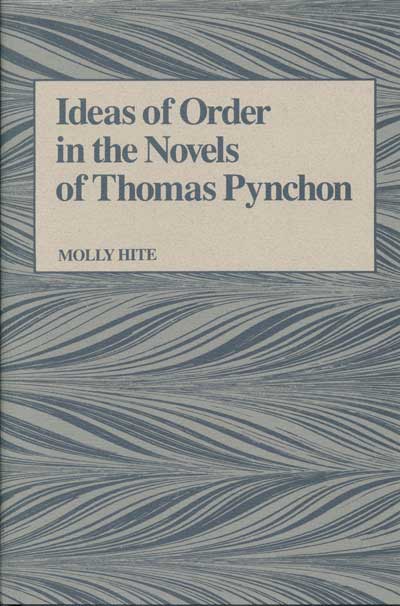Ideas of Order in the Novels of Thomas PynchonMolly Hite |
 1983 pp. 6x9  $24.95 paper 978-0-8142-5326-7 Add paper to shopping cart $47.95 cloth 978-0-8142-0350-7 Add cloth to shopping cart Shopping Cart Instructions Review/Change Shopping Cart & Check-out | |||
|
|
“Of [recent studies on Pynchon] Molly Hite's is by all measures the most provocatively conceived and best written. Ideas of Order in the Novels of Thomas Pynchon essays, in chronological sequence, the three Pynchon novels published to date. . . . Her book differs in its determination to see Pynchon whole, to grasp the interworkings of genre and structure, and thus to put the writer's craft and his ideas under an overarching interpretation.” —Modern Fiction Studies Somewhere near the beginning of this incisive critical study of perhaps the most elusive and, to some minds, structurally disordered of living writers, Molly Hite notes that the idea of order has always fascinated novelists. She attributes this to the genre's being a hybrid, committed as it is, on the one hand, to a rigorous teleology in which events exist for the sake of resolution, and, on the other, to imitating a world that stubbornly refuses to ad up. the teleological impetus of narrative, she notes, reflects a “a God-ordered universe,” while the mimetic tendency describes “a man-centered world.” And because the two world views are irreconcilable, they pose a dilemma—the dilemma that Pynchon treats satirically in his three novels: that the alternative to theology is paranoia. In confronting his characters with evidence that either a transcendent power imposes order on the world, or that, in the absence of such a power, all order is illusory, Pynchon parodies a postromantic attitude that takes these extremes as exhaustive. He invites his characters—and his readers—to consider and to regard as somehow “authorized” such interpretations as that either some version of Providence, be it benign or malign, is directing history to its own ends, or events are perfectly discrete and human life is meaningless. And these are interpretations that Pynchon regards, not only as opposing, but as exclusive; and they exclude not only one another, but claim also to exclude that “middle” region of meaning and discourse that is the traditional subject matter of the novel. By manipulating these extremes, Pynchon provokes his readers to reconsider the grounds for meaning and value that characterize the secular human world the novel traditionally produces. Like all great innovators in fiction, he reinvents his form by discovering new possibilities in the novel's defining conditions. Like his heroine Oedipa Maas, he sets out to “project a world”—the novelist's fundamental task—but unlike Oedipa he recognizes that a world adequate to human reality must remain open to possibility. It can neither be eternally ordered toward a predestined end, nor can it be chaotic. Pynchon's fictional worlds are, accordingly, pluralistic, and are governed, not by a rigid, absolute, transcendentally imposed idea of order, but by multiple partial, overlapping, and often conflicting ideas of order. The worlds that Pynchon projects in his three novels—V., The Crying of Lot 49, and Gravity's Rainbow—are complex and difficult to negotiate; but they are not, Dr. Hite insists, incoherent. And even when they are most bizarre and surreal, they are familiar; for they evoke a multilayered reality in which multiple means of putting things together manage to coexist without ever resolving into a single, definitive system of organization. By placing thematic concerns within the context of Pynchon's experiments with narrative structure and voice, and in this way helping to correct the imbalance caused by a body of criticism that has tended to minimize such formal features, Dr. Hite leads to an increased understanding of Pynchon's spectacle of a postreligious society committed to a vision of apocalypse. Molly Hite is assistant professor of English at Cornell University. | |||

